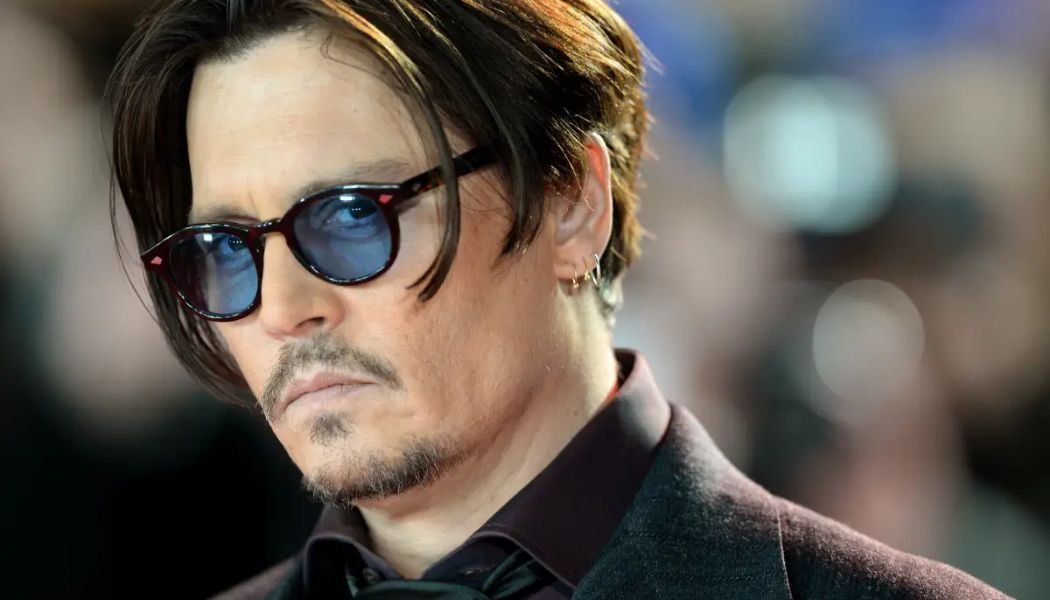Quick Facts
| Attribute | Details |
|---|---|
| Full Name | John Christopher Depp II |
| Birth Date | June 9, 1963 |
| Birthplace | Owensboro, Kentucky, USA |
| Age (in youth) | Late teens to 20s (1979–1990s) |
| Height | 5’10” (178 cm) |
| Early Career | Musician, Actor (21 Jump Street) |
| Breakthrough | 21 Jump Street (1987) |
| Notable Early Films | Edward Scissorhands, Cry-Baby, Platoon |
| Known For | Unique style, unconventional roles |
| Nickname | “Heartthrob of the ’80s and ’90s” |
1. Introduction: The Early Years of Johnny Depp
Johnny Depp, now regarded as one of Hollywood’s most versatile actors, began his journey in the late 1970s and 1980s as a young dreamer with a rebellious spirit. Long before Pirates of the Caribbean turned him into a global superstar, Depp was carving out a path as a teen idol, indie actor, and unconventional leading man. His early years tell a fascinating story of a young artist defying expectations.
2. Childhood and Family Background
Born in Owensboro, Kentucky, Johnny Depp grew up in a working-class family. His father worked as a civil engineer while his mother was a waitress. After a series of moves during his childhood, Depp eventually settled in Florida. Music was his first passion, and he dreamed of becoming a rock musician before acting changed his life. His humble beginnings shaped the grounded yet restless energy he carried into his youth.
3. First Steps Toward Acting
Depp’s initial focus was music, but fate redirected him toward acting. After moving to Los Angeles, he joined a band called The Kids, which gained local success. A meeting with actor Nicolas Cage led him to his first audition. This connection ultimately landed him his very first film role in Wes Craven’s horror classic A Nightmare on Elm Street (1984), where he played the doomed boyfriend Glen.
4. Breakthrough Role in 21 Jump Street
While Elm Street was a good start, it was 21 Jump Street (1987–1990) that launched Johnny Depp into stardom. Playing Officer Tom Hanson, a baby-faced undercover cop, Depp became a household name and a teen heartthrob. However, he felt confined by the role, worried about being typecast as just another TV star. His desire to escape this image shaped the bold career moves he made afterward.
5. Hollywood’s Rising Heartthrob
In the late ’80s, Johnny Depp became a pop culture sensation. Posters of him decorated bedrooms, and magazines frequently featured his chiseled looks and brooding style. Young Depp’s charm, paired with his reluctance to conform to Hollywood norms, only fueled his mystique. Despite his widespread popularity, he constantly resisted being boxed into the role of just a pretty face.
6. Partnerships with Tim Burton
Depp’s career took a defining turn when he partnered with director Tim Burton. Their first collaboration, Edward Scissorhands (1990), not only showcased Depp’s acting depth but also solidified his reputation as a daring and unconventional performer. This film marked the beginning of a legendary actor-director relationship that would span decades.
7. Unique Style and Iconic Looks in His Youth
Young Johnny Depp was more than an actor—he was a style icon. Known for his messy hair, leather jackets, and rock-star edge, Depp embodied the rebellious spirit of the late ’80s and early ’90s. His fashion sense inspired countless fans and remains influential today. Whether in ripped jeans or a tailored suit, Depp’s charisma and individuality always stood out.
8. Early Film Career Highlights
After Edward Scissorhands, Depp carefully chose projects that highlighted his versatility. He starred in Cry-Baby (1990), a musical satire directed by John Waters, which further cemented his cult status. His earlier appearances in Platoon (1986) and Benny & Joon (1993) demonstrated his wide range and commitment to offbeat characters. By his late 20s, Depp was already an actor respected for his craft.
9. Struggles Behind the Fame
Despite success, Depp faced personal challenges in his youth. He often spoke of feeling misunderstood and uncomfortable with celebrity status. Fame came quickly, and along with it, media scrutiny. Depp’s restless nature, coupled with his resistance to Hollywood stereotypes, led to struggles that shaped his identity both as an artist and a person.
10. Influence on 1990s Pop Culture
Johnny Depp was more than just an actor; he was a cultural phenomenon. His early films, TV appearances, and magazine covers captured the spirit of the 1990s youth. Teenagers admired his unconventional path, and he became a symbol of rebellion, artistry, and authenticity during an era when Hollywood often pushed cookie-cutter stars.
11. Transition from Teen Idol to Serious Actor
By the mid-1990s, Depp had successfully broken free from his “teen idol” label. His collaborations with auteurs like Tim Burton and his choices in independent films solidified his reputation as a serious actor. This transition allowed him to escape the limitations of his early fame and prepare for the iconic roles that would later define his career.
12. Conclusion: The Legacy of Young Johnny Depp
Young Johnny Depp’s journey from a small-town musician to Hollywood’s unconventional star is one of resilience and bold choices. He refused to be confined by early fame, instead shaping a career built on creativity and individuality. His youth laid the foundation for the global icon he would become—a reminder that even the biggest stars start with a dream and a restless spirit.

